“Death of a Unicorn” (2025) and “Monty Python and The Holy Grain” 50th Anniversary with Hollis Monroe, Phil Brown and Ron Adkins.
Podcast (talkingpics): Play in new window | Download
Subscribe: Apple Podcasts | RSS
“Death of a Unicorn” (2025) and “Monty Python and The Holy Grain” 50th Anniversary with Hollis Monroe, Phil Brown and Ron Adkins.
Podcast (talkingpics): Play in new window | Download
Subscribe: Apple Podcasts | RSS
Trumpeter Michael Sarian and Natural Talent Music producer Creighton Gaynor are on today ahead of Michael’s upcoming show, ESQUINA, with the Sam Ross Quartet opening. Its Friday, May 9, 7pm at the PS1 Close House location (538 South Gilbert Street).
This unique venue is limited in space, so get your tickets now at publicspaceone.com.
For more info about Michael Sarian visit michaelsarian.com.
Subscribe to The Culture Crawl at kcck.org/culture or search “Culture Crawl” in your favorite podcast player. Listen Live at 10:30am most weekdays on Iowa’s Jazz station. 88.3 FM or kcck.org/listen.
Podcast (culturecrawl): Play in new window | Download
Subscribe: Apple Podcasts | RSS
Artist Saw Naing Lin watched first-hand as his home village in Burma (now Myanmar) was destroyed, sending him and his family to a refugee camp, where he taught art to kids and teens. Eventually, he and his family made their way to the U.S. and settled in Cedar Rapids, to be near their friend John Chaimov.
in 2015, Saw Naing Lin began to tell the story of his village and the refugee camp in painting, since there were no photos or video to document his experience. “Fires” will be on display through July 10 in the first floor gallery at CSPS Hall, with an opening reception on May 10. More info at cspshall.org.
Subscribe to The Culture Crawl at kcck.org/culture or search “Culture Crawl” in your favorite podcast player. Listen Live at 10:30am most weekdays on Iowa’s Jazz station. 88.3 FM or kcck.org/listen.
Podcast (culturecrawl): Play in new window | Download
Subscribe: Apple Podcasts | RSS
The Iowa Jazz Composers Orchestra exclusively performs new jazz music created by Iowa composers. The group performs May 7 in Ballantyne Auditorium on the Kirkwood campus. Also performing will be the Kirkwood Jazz Ensemble, directed by Chris Navarette, who will sit in with the IJCO on trumpet.
Tickets are $10, available in advance at Kirkwood.edu/ballantyne or cash at the door.
Subscribe to The Culture Crawl at kcck.org/culture or search “Culture Crawl” in your favorite podcast player. Listen Live at 10:30am most weekdays on Iowa’s Jazz station. 88.3 FM or kcck.org/listen.
Podcast (culturecrawl): Play in new window | Download
Subscribe: Apple Podcasts | RSS
 Jazz journalist Bill Milkowski has described singer Nancy Kelly as “…a world-class jazz singer” with “…superb phrasing, excellent time, great intonation and tons of chops…” Rekindling the vibes of her early 1980s, 5-year run at Philly’s famed Jewell’s Jazz Club, Ms. Kelly gathers her musical family—saxophonist Jerry Weldon, guitarist Dave Stryker, drummer Carmen Intorre and the young organ phenom William Gorman—for a deeply soulful set of swinging standards, bop, and pop tunes on her new CD, “Be Cool.” Dynamic and full of life, Kelly displays a divine sense of pacing, mood, emotion and musical savvy throughout this powerful set.
Jazz journalist Bill Milkowski has described singer Nancy Kelly as “…a world-class jazz singer” with “…superb phrasing, excellent time, great intonation and tons of chops…” Rekindling the vibes of her early 1980s, 5-year run at Philly’s famed Jewell’s Jazz Club, Ms. Kelly gathers her musical family—saxophonist Jerry Weldon, guitarist Dave Stryker, drummer Carmen Intorre and the young organ phenom William Gorman—for a deeply soulful set of swinging standards, bop, and pop tunes on her new CD, “Be Cool.” Dynamic and full of life, Kelly displays a divine sense of pacing, mood, emotion and musical savvy throughout this powerful set.
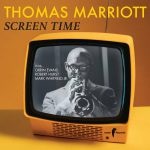
“Screen Time,” trumpeter Thomas Marriott’s 15th album as a leader, features music from screens large and small, from the cineplex to the iPhone, all reinvented for a state-of-the-art jazz quartet. With longtime collaborator and producer Orrin Evans on piano, rising star Mark Whitfield, Jr. on drums and jazz legend Robert Hurst III on bass, the disc takes the listener through an album of songs both familiar and obscure, energetic and contemplative, original and well-loved, and always engaging.
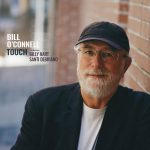


Also this week, “Touch” is the highly anticipated new album from Grammy-nominated pianist, composer and arranger Bill O’Connell, showcasing the artist’s return to the intimate trio format; drummer, composer and Iowa native Bill Stewart is captured “Live at the Village Vanguard” with bassist Larry Grenadier and saxophonist Walter Smith III; and Poncho Sanchez and his Latin Jazz Band are “Live at the Belly Up Tavern” in Solana Beach, California, for their new offering.
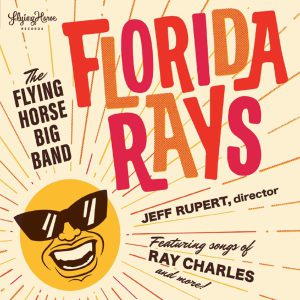
1.90.3-WPGOHJLMVUWGQVUQK26YRACB64.0.1-4
Hey, Jazz fans! Be sure to tune in this week as we celebrate the birthdays of drummer Paul Barbarin, pianists Mary Lou Williams, Stanley Cowell and Keith Jarrett, brassmen Red Nichols, Jack Walrath, Randy Sandke, Til Bronner, and Gabe Medd, singers Teresa Brewer and Tania Maria and more. We’ll also mark the recording anniversaries of John Coltrane’s “Giant Steps” (1959), Charles Mingus’ “Mingus Ah Um” (1959), Dexter Gordon’s “Dexter Calling” (1961), Mary Lou Williams “Live at the Keystone Corner” (1977), Joe Williams “Ballad and Blues Master” (1987), Charles Earland “The Groove Masters Series: Slammin’ & Jammin’” (1997), The Flying Horse Big Band’s “Florida Rays” (2019) and many others Mondays thru Fridays and at noon on JAZZ MASTERS on Jazz 88.3 KCCK.
 Jazz Corner of the World (Encore)
Jazz Corner of the World (Encore)
Mondays at 6:00pm
Birthday Salute to Stanley Cowell
Craig celebrates the music and memory of the great pianist Stanley Cowell by spinning choice examples from Cowell’s stellar career. We’ll hear him both as a leader and a prominent sideman with the likes of Charles Tolliver, Jimmy Heath, Larry Coryell, Roy Haynes, Bobby Hutcherson, Art Pepper, and others!
Wednesday Night Special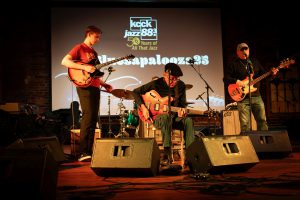
Wednesdays at 6:00pm
‘daBluesapalooza 2025
It was another all-star jam when Kat Blue & the True Believers, Johnny Kilowatt, Wonderful Smiths, and a truckload of special guests gathered at the Olympic Southside Theatre for ‘daBluesapalooza 2025 – KCCK’s benefit party to support Iowa’s longest-running blues radio shows!

Jazz Night In America
Thursdays at 11:00pm
Nate Smith’s Kinfolk (with Strings)
Drummer Nate Smith, who is often celebrated for his groovy “pocket,” finds a new a dimension to his craft as a string arranger. Hear the premiere of his new sextet Kinfolk, with a double string quartet featuring members of the Memphis Symphony Orchestra.
Jazz Corner of the World![Keith Jarrett [Album Covers]](https://www.davegott.com/music/images/keith_jarrett-facing_you.jpg)
Saturdays from 12:00 noon to 4:00pm
Keith Jarrett’s 80th Birthday
Craig celebrates the 80th birthday of pianist Keith Jarrett by sampling some gems from Keith’s career. We’ll begin with his days with Charles Lloyd and Miles Davis, and play classic recordings through 2015.
KCCK’s Midnight CD
KCCK features a new album every night, played from start-to-finish.
Zito’s Jump by James Zito on Monday; Agua e Sol by Laura Dreyer & the Manhattan-Rio Connection on Tuesday; Are You Really Real by the Shuffle Demons on Wednesday; In Your Dreams by the Reid Hoyson Project on Thursday; Money & Power by Ally Venable on Friday; Truth Is by Carolyn Wonderland on Saturday; Smitty Straightens Out by Peter Smith on Sunday.
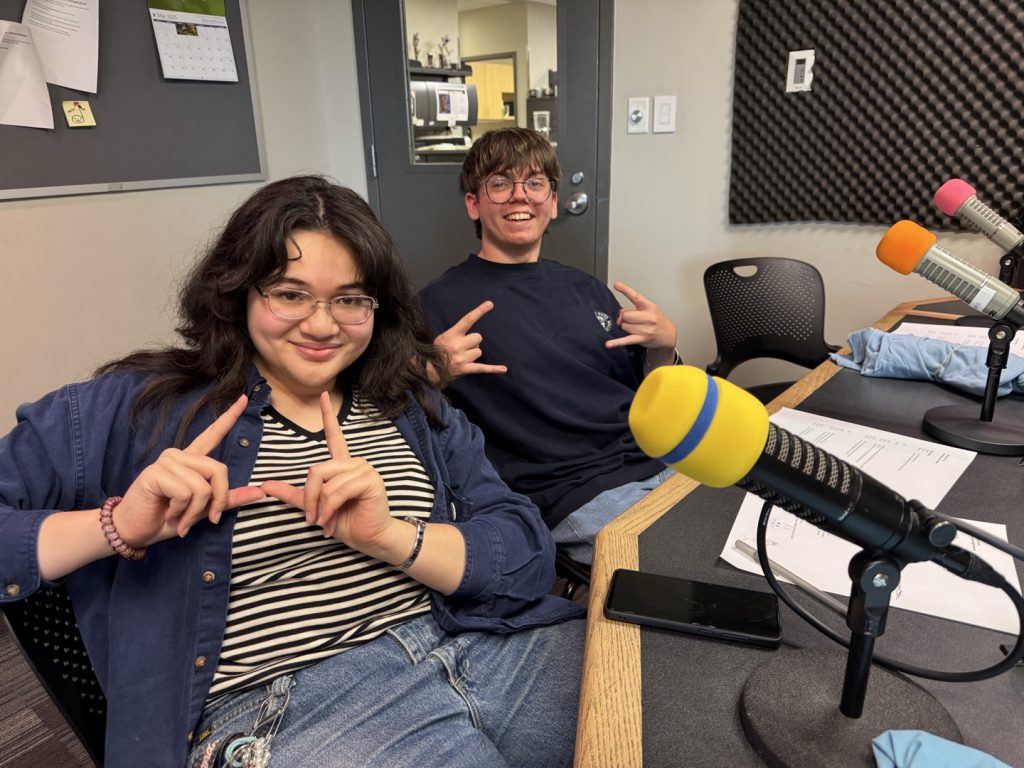 Leilua Conrad and Tristan Gray represented the Washington Revolutionists for their guest DJ hour, playing a song from Washington alum Ryan Middagh, among others, and talking about “breaking in” new Kirkwood director Chris Navarette as their guest artist.
Leilua Conrad and Tristan Gray represented the Washington Revolutionists for their guest DJ hour, playing a song from Washington alum Ryan Middagh, among others, and talking about “breaking in” new Kirkwood director Chris Navarette as their guest artist.
Leilua & Tristan’s Playlist:
Podcast (specials): Play in new window | Download
Subscribe: Apple Podcasts | RSS